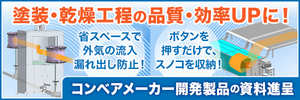1~24 item / All 24 items
Displayed results
Filter by category

Knowledge of visual inspection
I have summarized the knowledge necessary to start automated visual inspection at a low cost and on a small scale.




























